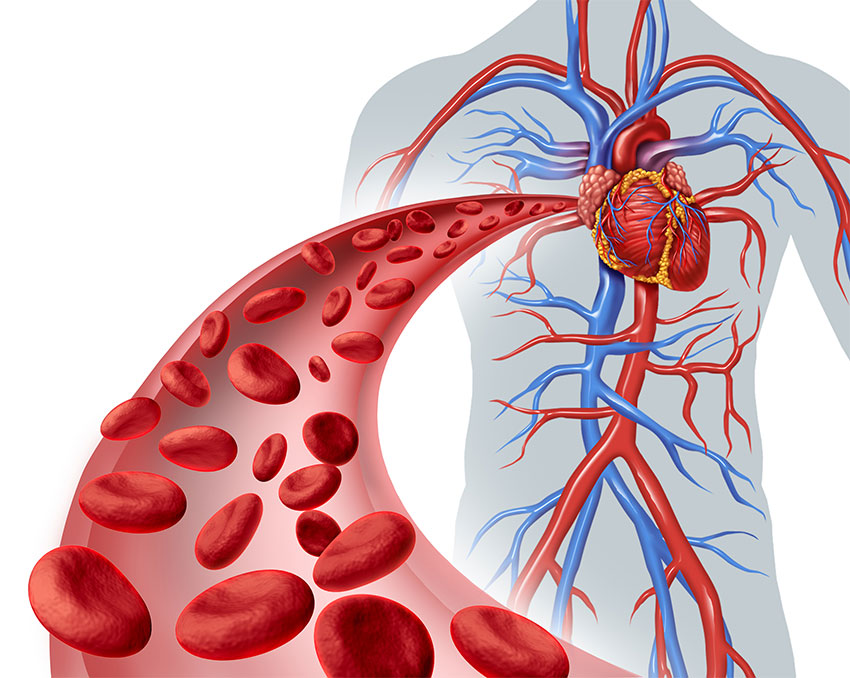Simple Tips to Improve Poor Blood Circulation
Poor blood circulation can affect your whole body leading to symptoms like tingling and numbness in your extremities as well as pain, muscle cramps, digestive issues, swelling in the feet or ankles, and varicose veins. These symptoms can be unpleasant, but in some cases can lead to additional complications. So what can you do to help avoid or improve poor blood circulation?

Lifestyle Changes
In addition to dietary changes, you can also improve your poor blood circulation by making changes to your habits and daily activity, such as:
1. Increase Physical Activity
We all know that there are so many health benefits to regular exercise, whether it’s high intensity workouts, strength training, stretching, or low-impact activity, everyone can benefit from moving their bodies more. One study noted:
“Exercise improves the body’s ability to take in and use oxygen. It also improves the capacity of blood vessels to dilate, which helps them work more efficiently, allowing the muscles to receive oxygen more easily.”
So if you’re looking to improve your poor blood circulation, the easiest thing you can do is to just get out there & move!
2. Practice Yoga
As an extension of increasing your physical activity, one way to do this is to practice yoga. This can be a great option for those who cannot do high intensity workouts or more challenging exercises due to joint, muscle, or endurance issues. Yoga is a low intensity exercise that is “beneficial for the cardiovascular system and a person’s metabolism.”
3. Stay Hydrated
As we all know, drinking enough water is vital for our overall health. It also helps blood flow around the body and in doing so can boost circulation. In fact, hypohydration (the lack of enough eater in the body) “impairs vascular function and cardiovascular regulation.”
4. Reduce Stress
Nobody likes to be stressed. Stress and anxiety can severely affect our systems in so many negative ways, including but not limited to: chest pain, indigestion, insomnia, headache, and fatigue. Stress can negatively affect your body’s ability to heal, and affect your circulation by increasing your blood pressure. So if you’re looking to improve your poor blood circulation, do your mind and body a favor by taking steps reduce stress and anxiety. Here are some helpful tips to manage stress.
5. Lose weight
This can be a tricky task as everyone has a different body type, height, body mass index, etc. And weight loss in general can be highly subjective. Luckily it goes hand-in-hand with the above-mentioned goals. If you’re eating whole, nutritious foods, moving your body more, and drinking enough water, weight loss can actually end up being a side effect of those actions.
Losing weight in order to improve poor blood circulation actually has more to do with obesity. As this study found that “losing weight improved circulation for women who were overweight. The participants increased their levels of a protein called adiponectin that is associated with vascular function.”
6. Quit Smoking
Cigarettes cause so many health complications but can be difficult to quit due to their highly addictive nature. But if you’re ready to quit smoking, speak to your health professional for advice and resources on how to quit. Your body and future self will thank you.
Changes in your diet
You can start by eliminating added sugars and limiting your salt intake. When you have too much sugar in your system, it can cause the body to release high amounts of insulin, which triggers inflammation, and can even lead to type 2 diabetes. In order to reduce added sugars from your diet, try eliminating high-glycemic carbohydrates as well as checking labels on items like salad dressings, sauces, and other processed foods, where added sugars can be hiding.
While sodium (half of the chemical structure of salt) is essential for good heart health, too much can lead to water retention, which can lead to higher blood pressure. So it’s important to have a good balance so that your body gets the salt it needs without overloading your cardiovascular system.
If you’re looking for more ways to change your diet in order to improve your poor blood circulation, check out these articles:
Have Poor Circulation? Try Adding These Foods into Your Diet (Part 1)
Have Poor Circulation? Try These Foods to Increase Blood Flow (Part 2)